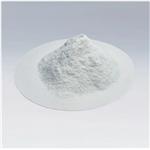What is Chloramphenicol?
Chloramphenicol was the first broad-spectrum antibiotic to be discovered and has been in clinical use since 1949. Although justifiably described as ‘‘no longer the drug of choice for any specific infection’', chloramphenicol remains an inexpensive drug effective against a wide range of bacteria, including Gram-positive, Gram-negative, aerobic, and anaerobic bacteria, as well as chlamydiae, coxiellae, leptospirae, mycoplasmae, rickettsiae, and treponemae. It is recommended by the World Health Organization for the treatment of very severe pneumonia, meningitis, mastoiditis, septic arthritis, and typhoid fever in children in developing countries (World Health Organization, 2005). Chloramphenicol was originally isolated from Streptomyces venezuelae. It competes with transfer RNA at the peptidyl transferase cavity of the 50S subunit of the bacterial 70S ribosome and thus inhibits protein synthesis. Chloramphenicol is available in parenteral, oral, and topical formulations.
ANTIMICROBIAL ACTIVITY
Chloramphenicol has a broad spectrum of antimicrobial activity, is used rarely in the developed world, and is easily available without prescription in many parts of the developing world. Moreover, while veterinary use of chloramphenicol is restricted in most developed countries, it is widely used in animals in many developing countries. Consequently, chloramphenicol resistance varies considerably from region to region and it is difficult to make generalizations about resistance patterns that are applicable worldwide.
MECHANISM OF DRUG ACTION
Chloramphenicol is a potent inhibitor of bacterial protein synthesis. This action of chloramphenicol is dependent on its ability to interact with nucleotides at the peptidyl transferase cavity in the 50S subunit of the 70S bacterial ribosome. In bacterial cells which have been exposed to chloramphenicol for a short time, protein synthesis may resume when the drug is withdrawn. Peptide chains whose synthesis was interrupted by chloramphenicol can be completed when the drug is removed. This explains the bacteriostatic rather than bactericidal action which this drug has against certain bacteria. With more prolonged exposure, chloramphenicol has additional effects on bacteria, including excretion of cellular macromolecules, lysis of cells, and degradation of ribosomes; these effects eventually lead to cell death. This bactericidal effect is dependent on the growth phase of the bacterial cells. Actively dividing cells rapidly lose viability, but resting or slowly dividing cells remain viable for long periods.
MODE OF ADMINISTRATION
Chloramphenicol can be administered orally, intramuscularly, intravenously, or topically. Oral administration is satisfactory for many conditions, but for severely ill patients initial administration by one of the parenteral routes is preferable because absorption of the oral drug may be poor. There are no generally accepted optimal therapeutic nontoxic serum levels; peak levels ranging from 15 to 25 mg/l , 30 mg/l, or 35 mg/l have been suggested for children. Erratic peak serum levels occur following i.v. administration of the succinate formulation to infants and children, and it has been suggested that the dosage could be adjusted to achieve reasonable trough serum levels – these should be kept as high as the mean inhibitory concentration of the offending organism (at least 5 mg/l if this is unknown) and below 10 mg/l. In most patients this would result in peak serum values below 20 mg/l and transient bone marrow suppression would be avoided.
Related articles And Qustion
See also
Lastest Price from Chloramphenicol manufacturers

US $0.00/kg2025-10-09
- CAS:
- 56-75-7
- Min. Order:
- 25kg
- Purity:
- 97.5%-102%,BP2024
- Supply Ability:
- 100MT

US $0.00-0.00/kg2025-06-03
- CAS:
- 56-75-7
- Min. Order:
- 1kg
- Purity:
- 98.0%-102.0%; BP/EP
- Supply Ability:
- 500KG




